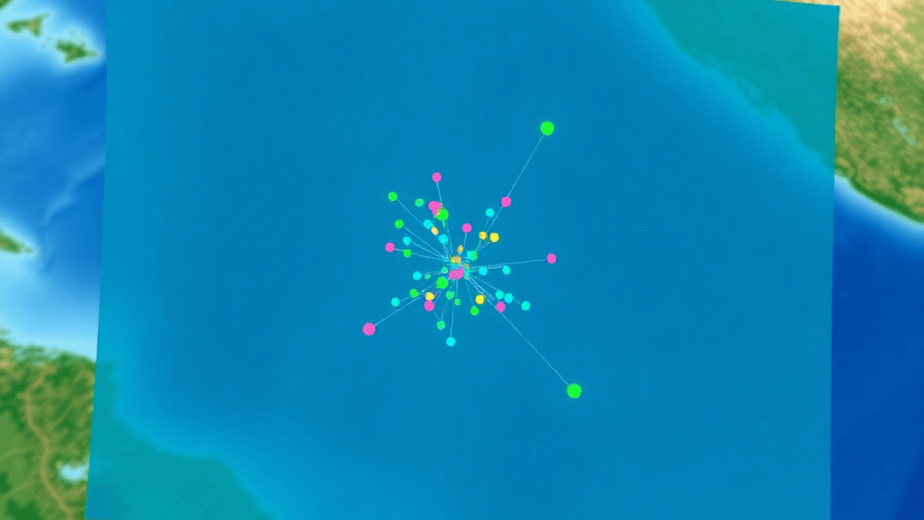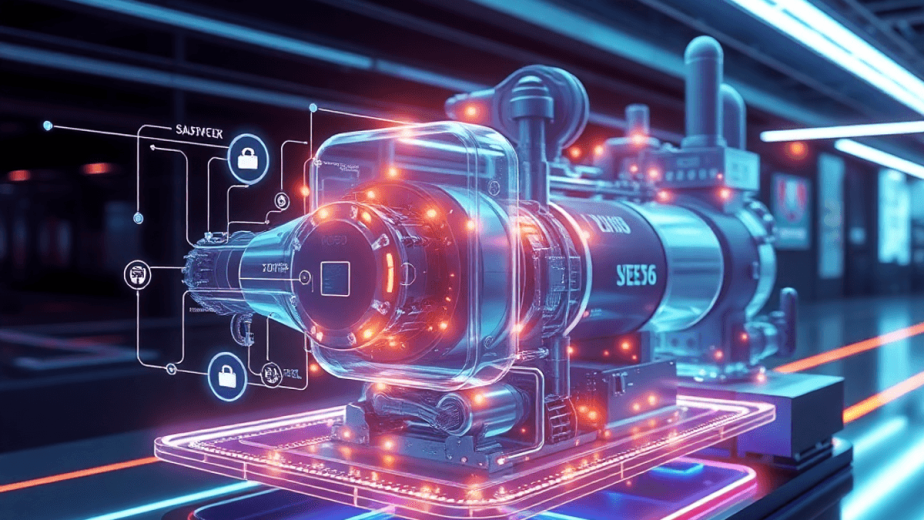Real-time 3D technology is a groundbreaking method used to create immersive visual experiences in many industries. Although it started in the gaming industry, real-time 3D has quickly spread to fields like architecture, engineering, and industrial uses.
This technology is important because it allows for interactive and dynamic visual representations, which can greatly improve decision-making and workflow efficiency. With the growing need for top-notch graphics and minimal delay in interactions in today’s applications, real-time 3D technology has become an essential resource for innovation and creativity.
The Role of Mira Spatial in Real-Time 3D
Mira Spatial, a cutting-edge technology company, plays a crucial role in transforming infrastructure monitoring and analytics through the use of real-time 3D technology. Here’s an insight into the key aspects of Mira Spatial’s involvement in this dynamic field:
1. Overview of Mira Spatial and its Mission
Mira Spatial stands at the forefront of using drones, satellites, and AI to develop intelligent systems for industries like energy, construction, and local governments. The company’s primary mission is to improve infrastructure management using advanced reality capture technology and analytics.
2. Solutions Offered by Mira Spatial for Infrastructure Management
Mira Spatial provides a variety of innovative solutions designed for infrastructure needs. These solutions include:
- Infrastructure Monitoring & Analytics: This includes real-time asset tracking, predictive maintenance, and risk assessment.
- Asset Intelligence Platform: This platform offers AI anomaly detection and interactive dashboards.
- Reality Capture Services: The company excels in providing drone and satellite data acquisition along with high-precision mapping techniques.
3. Industries Served by Mira Spatial
Mira Spatial focuses on delivering complete solutions to various industries such as:
- Electric Utilities (transmission/distribution/substations)
- Renewable Energy (wind/solar)
- Architecture/Engineering/Construction (AEC)
- Local Government (ports/municipalities/counties)
Their expertise lies in offering comprehensive infrastructure monitoring and analytics services that generate actionable intelligence across different sectors.
Real-Time 3D Technology Overview
Real-time 3D technology is different from traditional pre-computed 3D models because it offers dynamic and interactive experiences that are changing various industries. Unlike pre-computed 3D, real-time 3D technology allows for immediate rendering of graphics, enabling users to interact with the environment in a seamless and responsive manner. This instantaneous feedback loop is made possible by the low latency inherent in real-time 3D applications.
One of the key advantages of real-time 3D technology is its ability to deliver high-quality graphics on the fly. By using advanced hardware and software, real-time 3D applications can create stunning visuals that are as good as pre-rendered content. This level of graphic quality enhances the overall user experience, making it perfect for applications where visual appeal is very important.
In simple terms, real-time 3D technology changes how we interact with digital environments by offering a smooth and immersive experience that goes beyond traditional limits. Its low latency, high-quality graphics, and interactive nature make it a game-changer across industries, from architecture to industrial applications.
Software Platforms for Real-Time 3D
Software platforms like Unreal Engine are crucial in harnessing the power of real-time 3D technology. They provide developers in various industries with a wide range of features and tools. Here are some important things to keep in mind:
1. Role of Unreal Engine
Unreal Engine stands out as a robust tool for real-time 3D development, providing developers with a comprehensive set of features to create immersive and interactive experiences. Its intuitive interface and powerful rendering capabilities make it a popular choice for creating high-fidelity visuals in real time.
2. Features offered by software platforms like Unreal Engine
Software platforms such as Unreal Engine excel in delivering stunning visual quality with advanced lighting and shading techniques. These platforms offer seamless integration with third-party tools and plugins, enhancing workflow efficiency. Unreal Engine provides support for multiple platforms, enabling developers to create applications that can run on various devices. Advanced simulation tools allow for realistic physics interactions, making virtual environments more dynamic and engaging.
3. Industries
From gaming and entertainment to architecture, engineering, and construction (AEC), software platforms like Unreal Engine cater to a diverse range of industries. In the AEC sector, these tools enable architects and designers to visualize projects in real time, fostering collaboration and improving decision-making processes.
By leveraging the capabilities of software platforms like Unreal Engine, developers can harness the full potential of real-time 3D technology to create innovative solutions across different sectors.
Real-Time 3D in Architecture and Industrial Applications
Real-time 3D technology has transformed the fields of architecture and industrial applications, offering a wide range of benefits and opportunities for innovation. Here are some key aspects to consider:
1. Use of real-time 3D in architecture for immersive visualizations
Architects and designers can now create highly detailed and interactive 3D models that provide clients with a realistic representation of their projects. By incorporating Building Information Modeling (BIM) and Computer-Aided Design (CAD) data models into real-time 3D environments, stakeholders can visualize architectural designs in a more engaging and dynamic way.
2. Collaborative workflows facilitated by real-time 3D technology
Real-time 3D tools enable seamless collaboration among team members working on architectural projects. Multiple stakeholders can view, modify, and present design iterations simultaneously, fostering better communication and coordination throughout the project lifecycle. This collaborative approach enhances efficiency and reduces errors in the design process.
3. Enhancement of creativity and decision-making in industrial contexts through real-time 3D
In industrial applications such as manufacturing and engineering, real-time 3D technology empowers professionals to visualize complex systems and processes in a virtual environment. By creating digital twins – virtual replicas of physical assets or systems – engineers can analyze performance data, simulate scenarios, and optimize operations with greater precision. This immersive visualization capability enhances creativity, problem-solving, and decision-making in industrial settings.
By leveraging real-time 3D technology in architecture and industrial applications, professionals can unlock new possibilities for design innovation, collaboration, and operational efficiency. The interactive nature of real-time 3D environments not only streamlines workflows but also enhances the user experience, leading to improved outcomes across various sectors.
Benefits and Potential of Real-Time 3D Technology Across Sectors
Real-time 3D technology holds vast potential for driving innovation across diverse sectors. By harnessing the power of real-time 3D, industries can revolutionize their processes and outcomes through immersive and interactive visual experiences.
1. Innovation Catalyst
Real-time 3D opens up new avenues for creativity and problem-solving in fields such as architecture, engineering, construction, and beyond. It allows for the creation of cutting-edge solutions that were previously unimaginable. This transformative power is not limited to design or engineering alone; it also serves as a catalyst for nurse innovation in healthcare, enhancing patient care through advanced visual tools.
2. Enhanced Efficiency
The fast-paced nature of real-time 3D technology enables swift decision-making and streamlined workflows. This leads to improved productivity and resource optimization across various sectors. For instance, in the realm of mobile technology, the rapid advancement of real-time 3D is reshaping digital innovation in business, making processes more efficient than ever before.
3. Engaging Experiences
Through real-time 3D, users can interact with data and models in a dynamic way, fostering deeper understanding and engagement. This interactive approach enhances communication and collaboration within teams, ultimately leading to better outcomes. The SAGE Catalyst blog often highlights how such engaging experiences are revolutionizing learning and development across various fields.
Achieving a balance between innovation and practical application is key to unlocking the full potential of real-time 3D technology across different industries.
Conclusion
Real-time 3D technology is transforming industries by providing:
- Better decision-making with immediate, high-quality visual feedback
- Effortless collaboration among teams regardless of their location
- Faster workflows by using dynamic environments instead of static models
This technology will continue to grow beyond gaming and entertainment, becoming a crucial tool in fields like infrastructure, architecture, and energy. By embracing these advancements, businesses can stay ahead in an ever-changing digital world where interactive visualization is no longer a luxury but a necessity. Real-time 3D opens up new opportunities to convert data into actionable insights quickly and clearly.
FAQs (Frequently Asked Questions)
What is real-time 3D technology and how has it evolved?
Real-time 3D technology enables interactive three-dimensional experiences with low latency and high-quality graphics. Originally developed for the gaming industry, it has evolved to serve various sectors including architecture, industrial applications, and infrastructure management.
How does Mira Spatial contribute to real-time 3D applications?
Mira Spatial specializes in infrastructure monitoring and analytics using real-time 3D technology. Their solutions help manage infrastructure efficiently across multiple industries by providing detailed spatial data and actionable insights.
What are the key differences between pre-computed 3D and real-time 3D technology?
Pre-computed 3D involves rendering graphics beforehand, limiting interactivity and responsiveness. In contrast, real-time 3D generates graphics dynamically, allowing for interactive experiences with low latency and superior graphic quality.
Which software platforms are prominent for developing real-time 3D applications?
Unreal Engine is a leading software platform that provides comprehensive tools for developing real-time 3D applications. It supports various industries by enabling immersive visualizations and interactive experiences through advanced features.
How is real-time 3D technology applied in architecture and industrial sectors?
In architecture, real-time 3D facilitates immersive visualization of BIM/CAD data models and supports collaborative workflows. In industrial contexts, it enhances creativity and decision-making by enabling digital twins and interactive simulations.
What are the overall benefits of implementing real-time 3D technology across different sectors?
Real-time 3D technology drives innovation by delivering fast, interactive visual experiences that improve processes and outcomes. Its application across sectors leads to enhanced creativity, better decision-making, and more efficient workflows.



